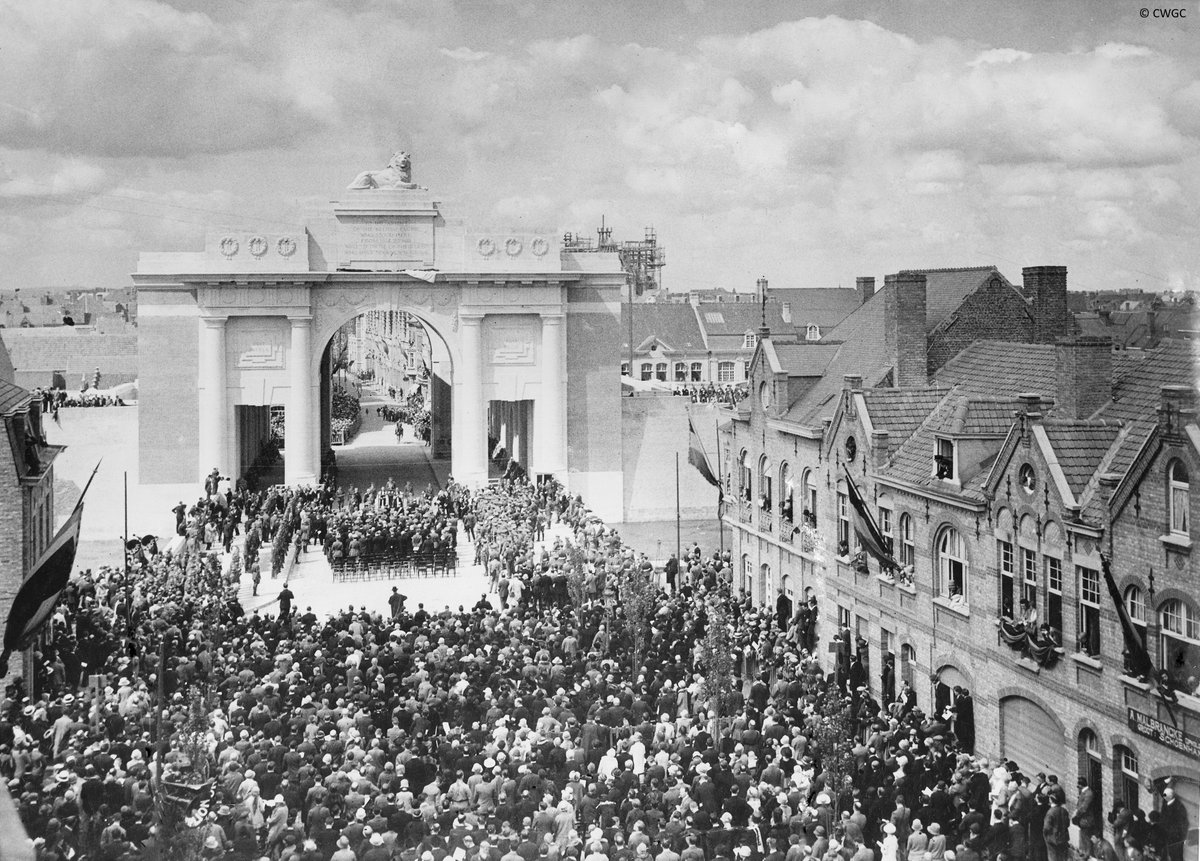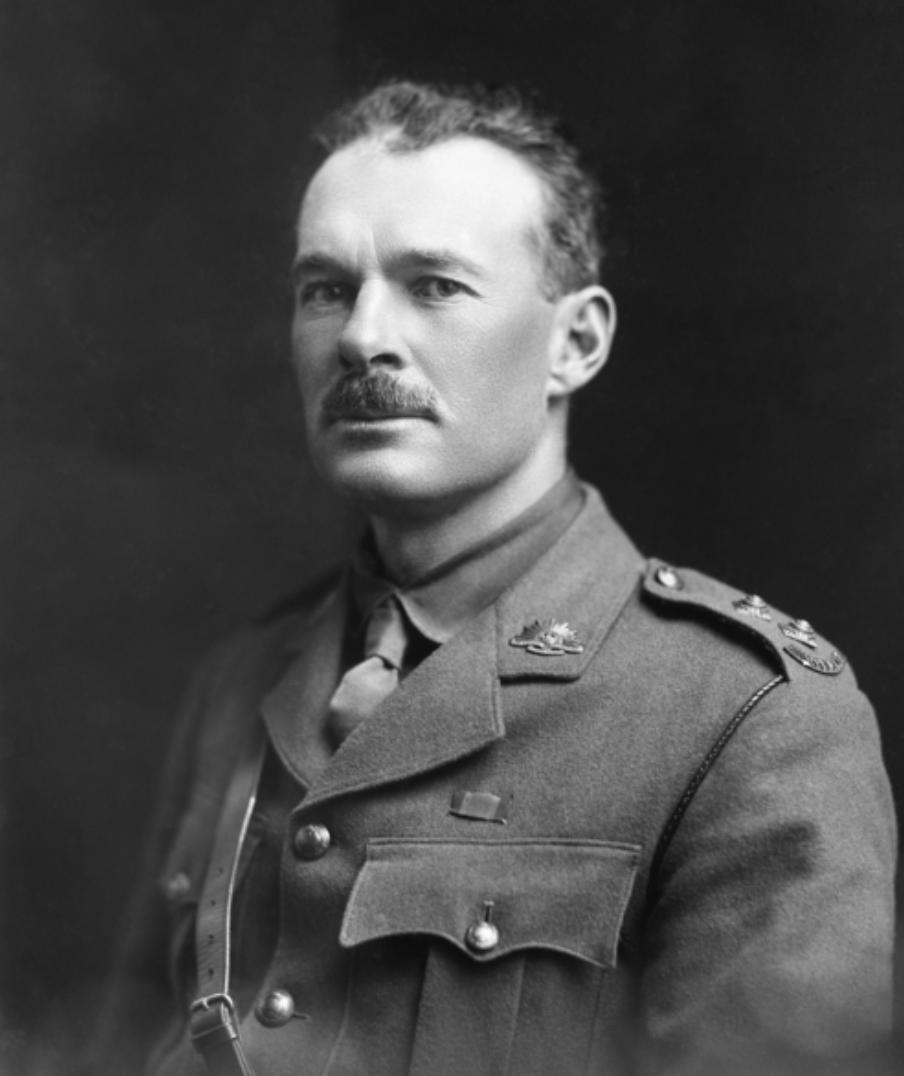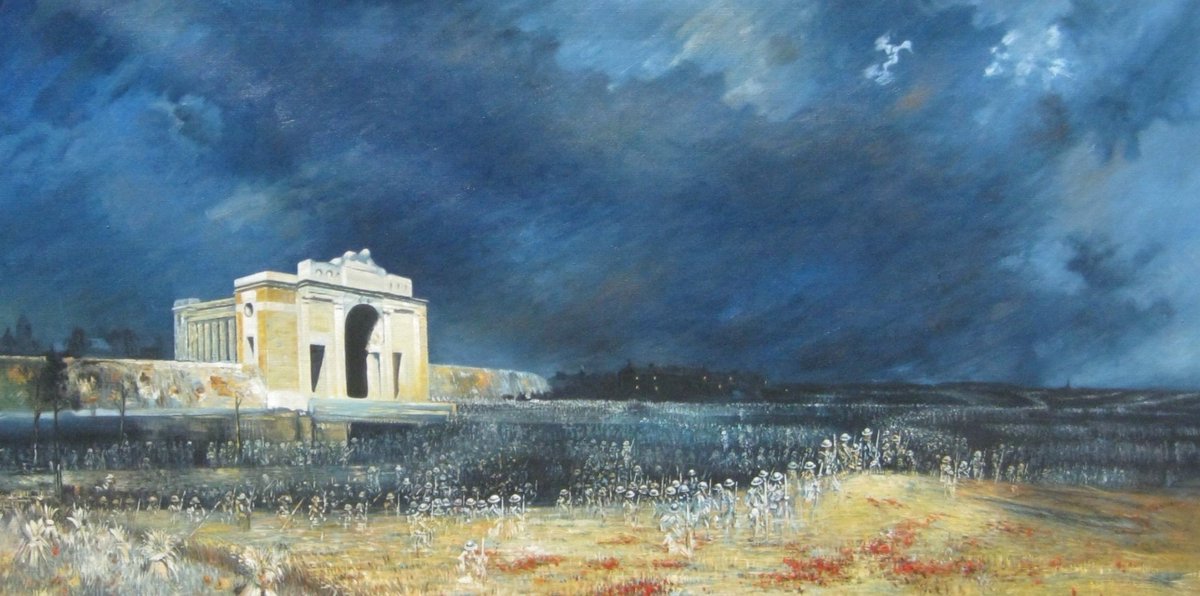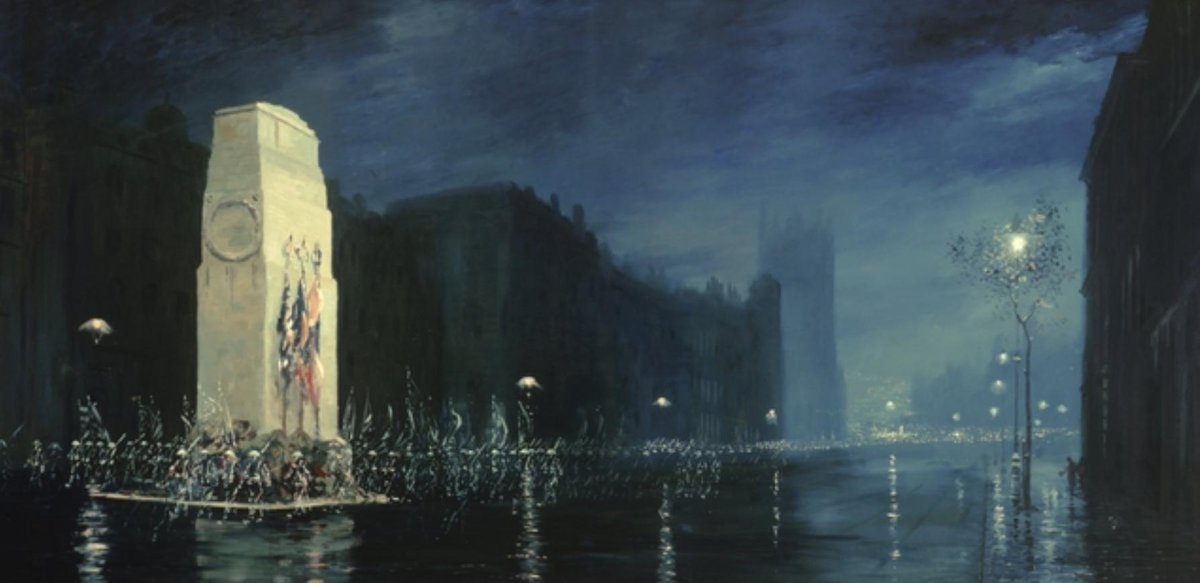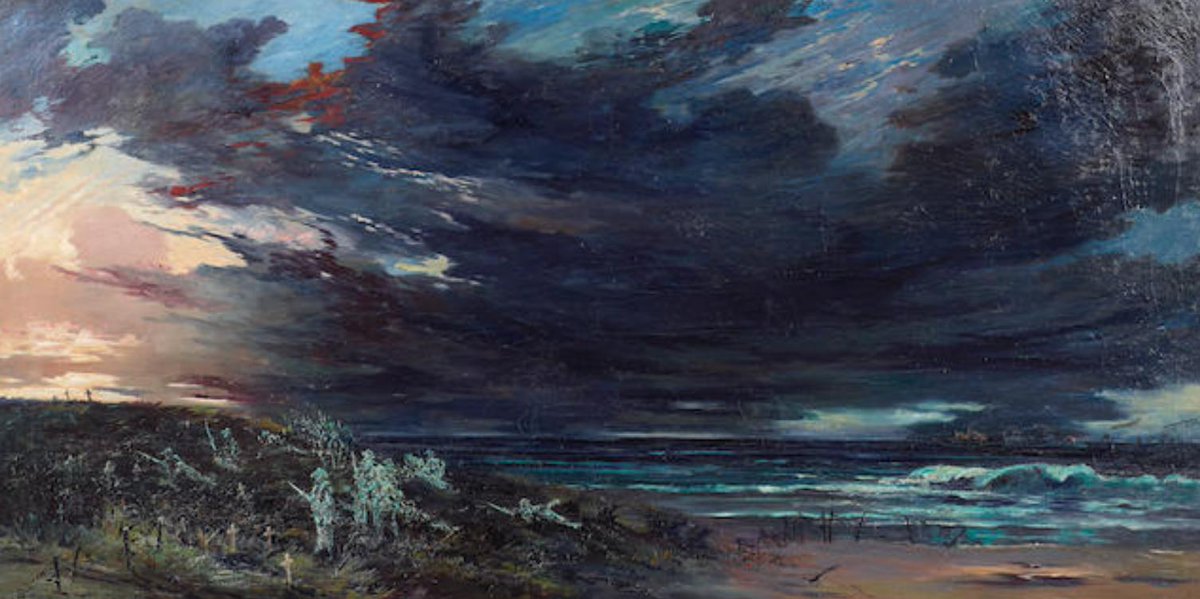Ypres, Sunday 24th July 1927. Australian war artist Captain Will Longstaff, shaken by the unveiling ceremony of the Menin Gate Memorial to the 350,000 who had died in the Ypres Salient, is unable to sleep & decides to go for a walk along the Menin Road, the Meensweg.
According to one account, as he walked through the dark, scarred town, he met one Mary Horsburgh, a big-hearted English canteen worker during the war, who told him that she kept feeling & #39;her dead boys& #39; all around her.
After he left her, in the chill of the overcast night, Will suddenly had a vision of strange clarity, a ghostly vision of hundreds of young steel-hatted soldiers rising up from the flat Flanders fields, from the poppied corn sheaves & the willows & the woods - Mary& #39;s dead boys.
The lost, the dead, the disappeared, the mourned grave-less battalions, the maimed, the bewildered, marching & stumbling hopefully towards the Menin Gate, the white-barrelled Hall of Memory described by Sassoon as a "sepulchre of crime" presiding over a hell-landscape of war.
Back in his London studio, Will began to feverishly paint the scene. According to one account, he completed it in one urgent session, beginning in the cold dawn light. With the tracing of each figure, recalling to life one beloved lad after another.
The painting –Menin Gate at Midnight (Ghosts of Menin Gate)– was bought by Lord Woolavington, who gave it to Australia. It was then reverently exhibited to thousands, providing vast comfort to those in raw endless grief; a visible, empirical depiction of the beloved lost.
Following the success of Menin Gate, Longstaff began to paint other works refiguring the dead. & #39;Immortal Shrine (Eternal Silence)& #39; depicts ghostly soldiers marching past the Cenotaph on Remembrance Day in a deserted, moonlit Whitehall.
& #39;The Rearguard (The Spirit of ANZAC),& #39; evoking lines of soldiers at the beach at Gallipoli, warships faint on the horizon, was bought by Sir Arthur Conan Doyle. Doyle& #39;s spiritualism was iron-clad with the death of his son, Kingsley, in 1918 & the painting offered deep solace.
For Doyle, it represented yet more evidence that the boys - his boy - lived on. "It is one of the most remarkable pictures I have seen," he wrote passionately. "The artist worked for 11 hours with the fury of inspiration. Genius has always been on the edge of psychic influence."
They still find lost soldiers in farmers& #39; fields around Ypres. In 2015, six men killed in 1914 were reinterred after being found south of the town. "It was quite a turnout," wrote Carl Liversage, from the CWGC. "It was a very dignified service - everyone was very moved by it."

 Read on Twitter
Read on Twitter